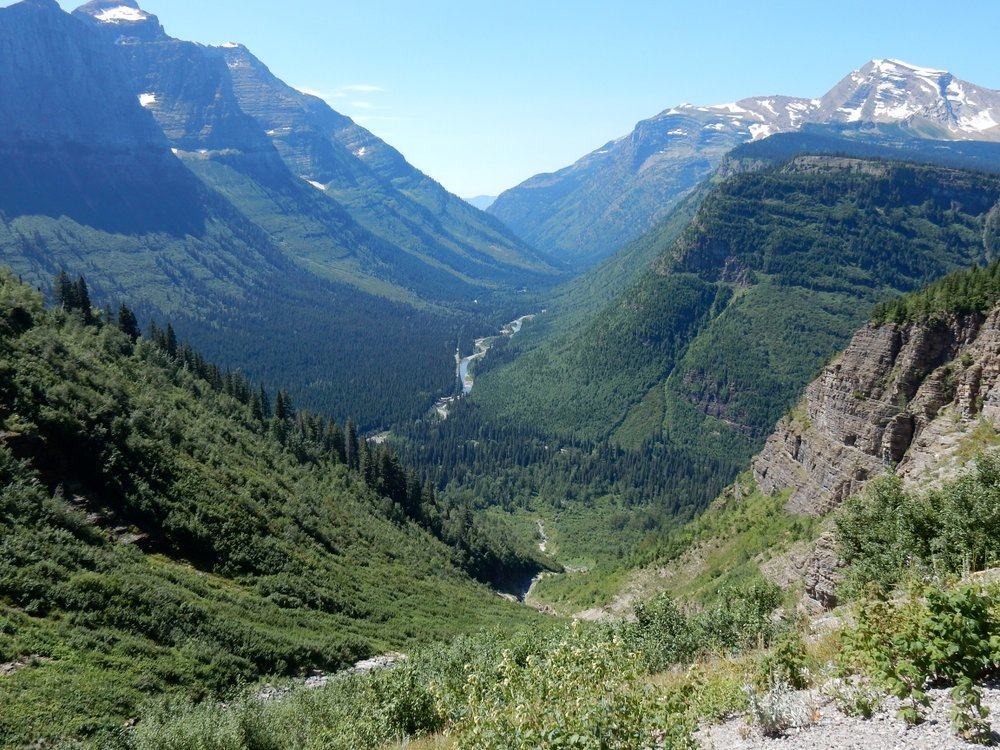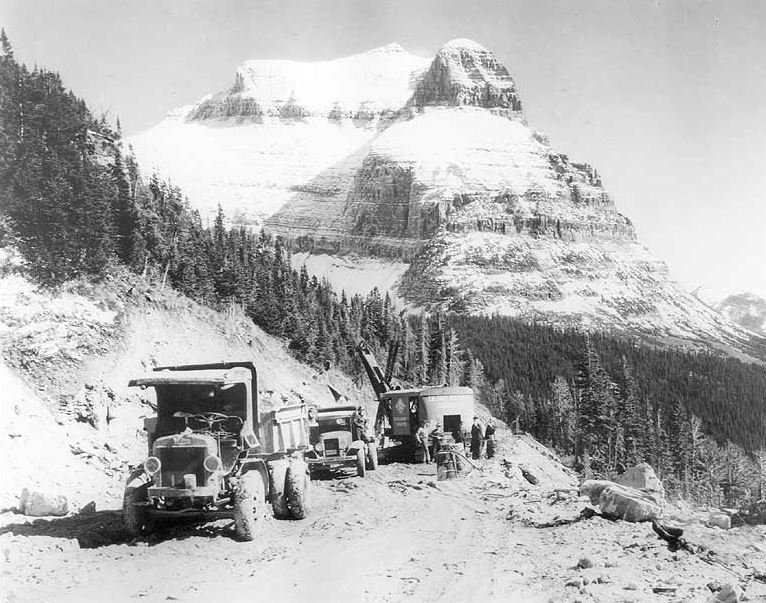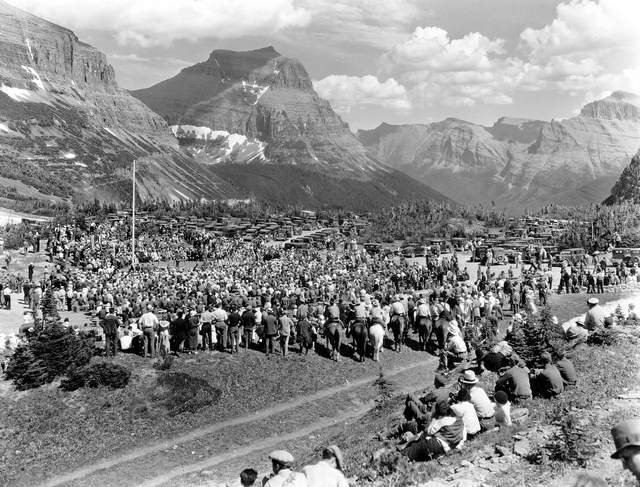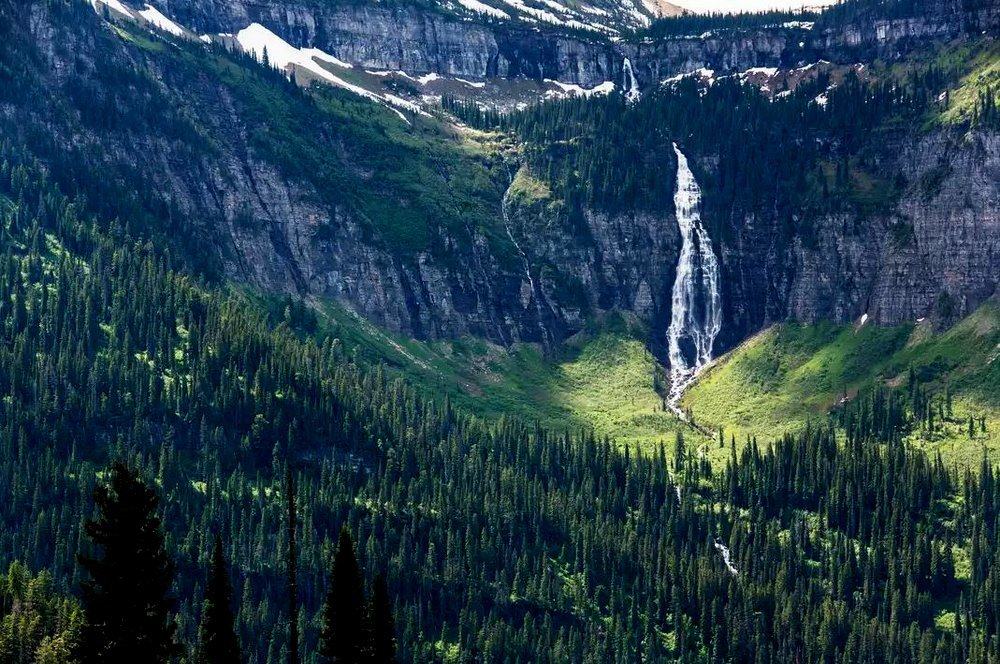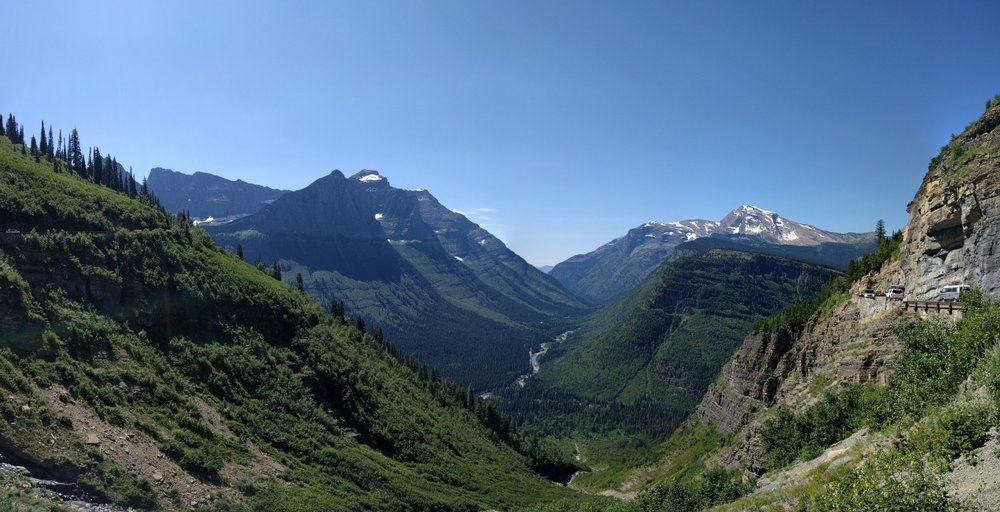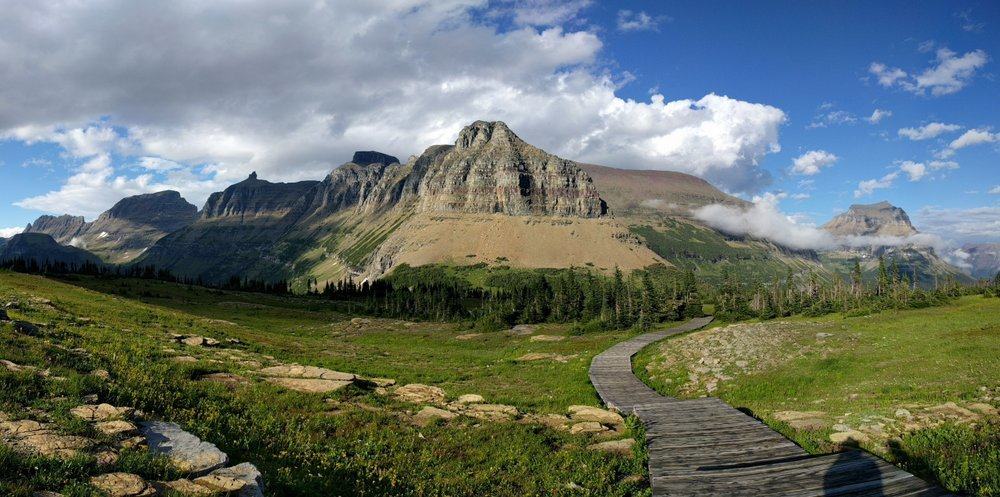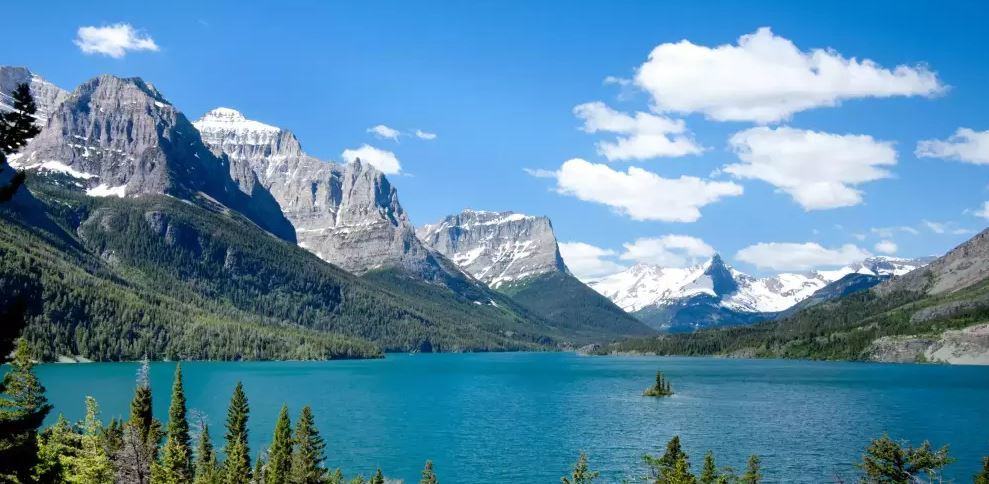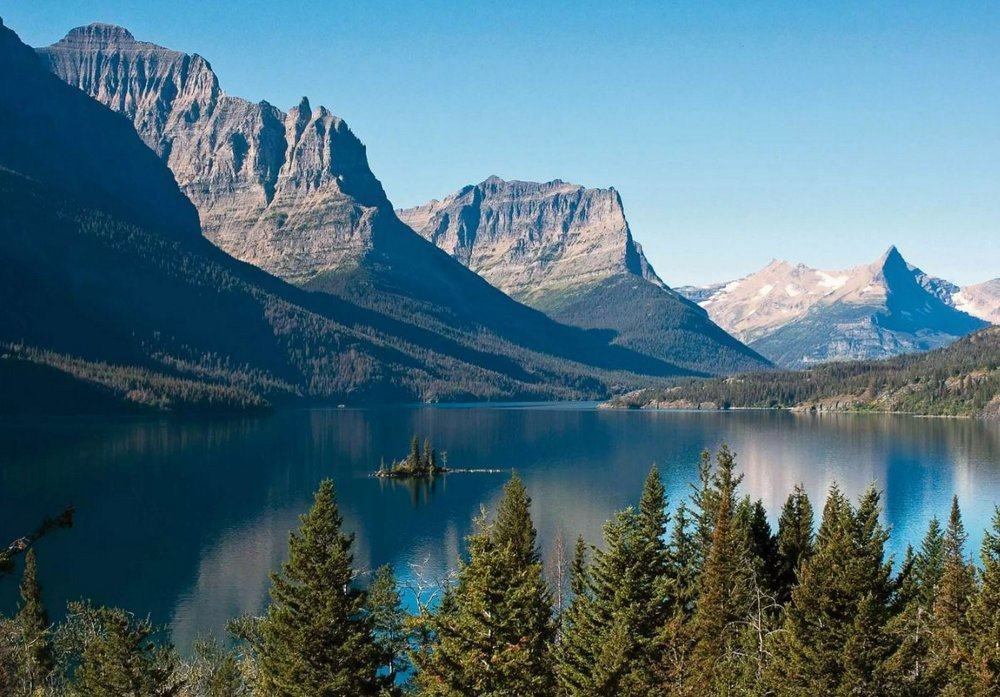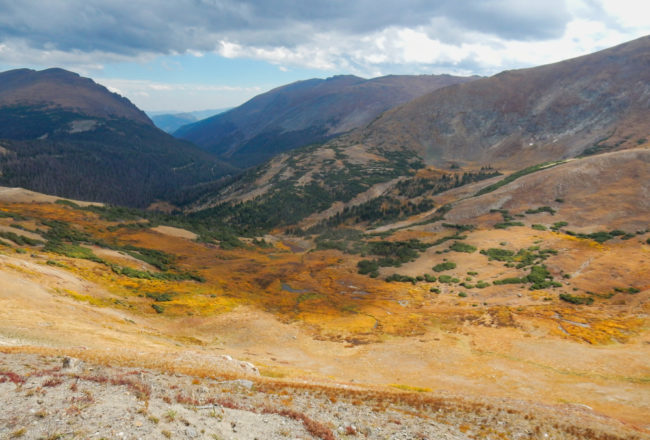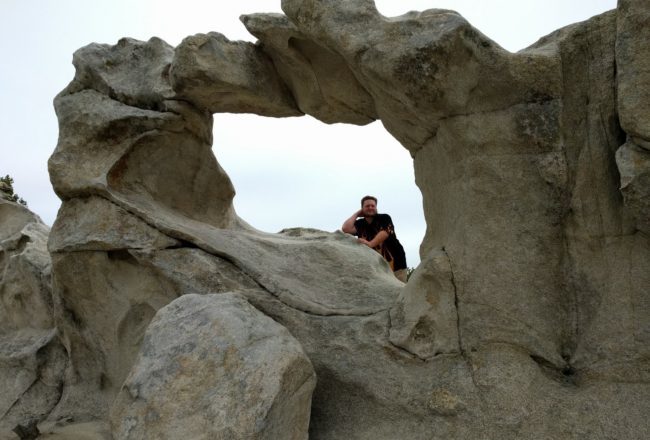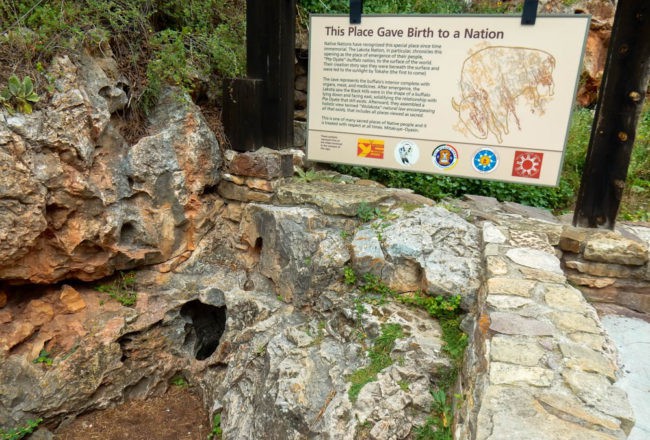Have you ever seen the 1980 film, The Shining? In the opening credits, we see the Torrance family car traveling northward along a lake and then through a tunnel, toward a resort hotel. That lake is Saint Mary Lake, and that road is Going-To-The-Sun Road of Glacier National Park.
During our visit to Glacier National Park, we found ourselves driving on Going-To-The-Sun Road — not for some interview at some doomed resort hotel, but for fantastic mountain views. Many folks said that the scenic drive should not be missed, and they were right. Traversing upon this road we saw wondrous valleys, impressive glaciers, cascading waterfalls, vivid wildflowers, and (of course) those towering mountains. We even caught glimpses of wildlife. Truly an epic alpine drive!
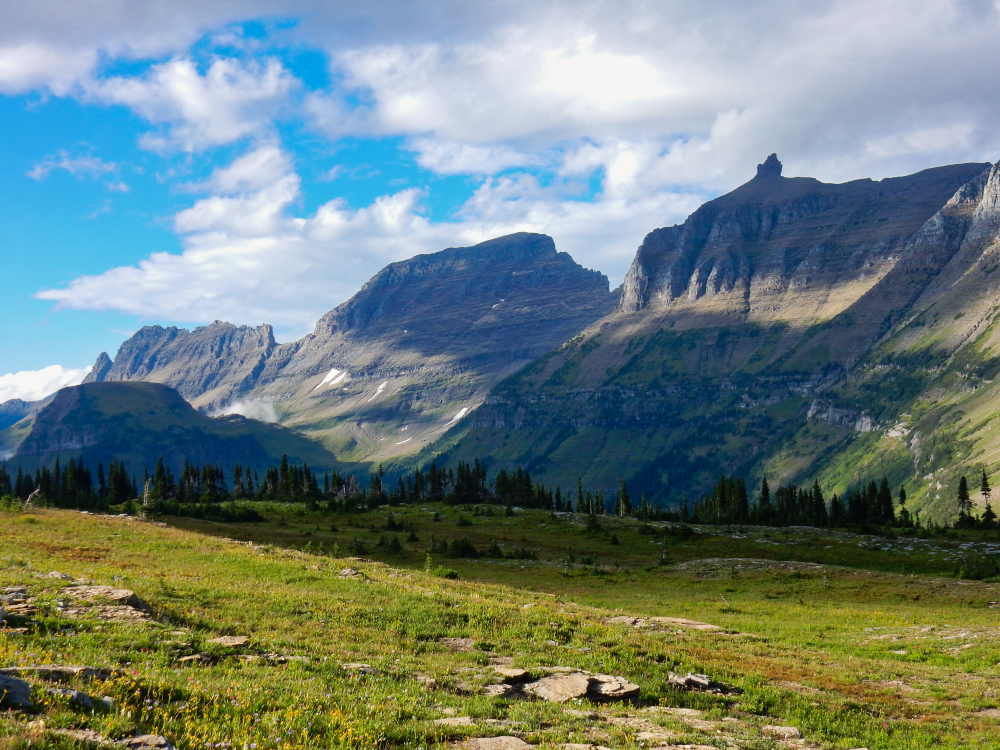
The only road that traverses the park crossing the Continental Divide through Logan Pass
Going-To-The-Sun Mountain
Named directly after the mountain itself, some say that Going-To-The-Sun came from the Blackfeet Indian legends. Blackfeet used the Mountain for vision quests, and they call the The-Face-of-Sour-Spirit-Who-Went-Back-to-The-Sun-After-His-Work-Was-Done Mountain. The name explains the snowfields on the mountainside which make the outline of a face when viewed from the west. Another story says the name came from a 1880s hunting guide named James Willard Schultz, who lived in the area. He and his Piikani native friend, Tail-Feathers-Coming-Over-the-Hill, gave the mountain its name.
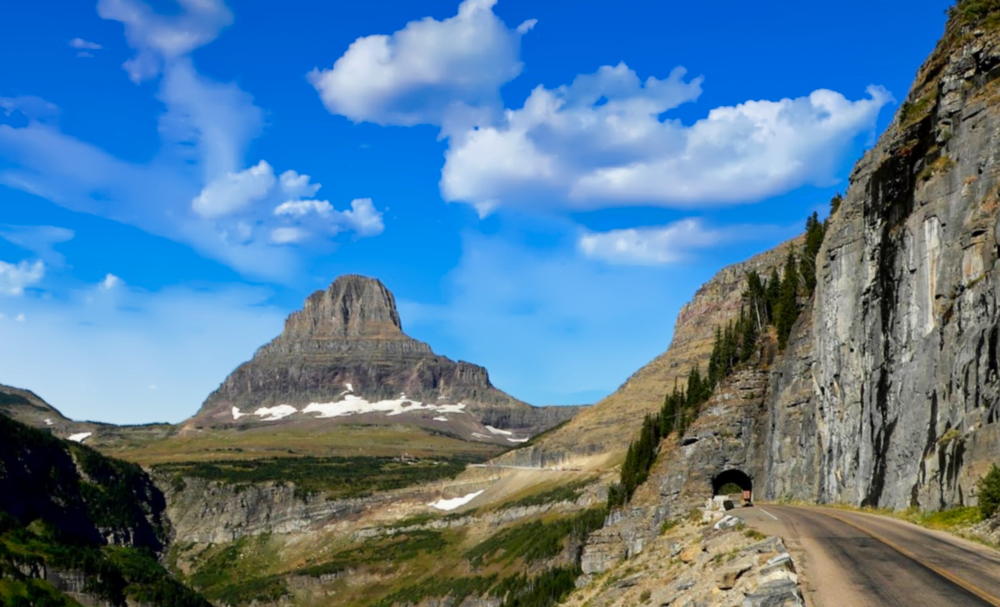
Going to the Sun Road Tunnel
Engineering Going-To-The-Sun Road
National Park Service specifically created Going-To-The-Sun Road to accommodate automobile tourism. Being a project first of its kind, they gave leadership to chief engineer, George Goodwin. Goodwin started planning the massive project in 1917, while the actual ground-breaking construction didn’t happen until 1921. As we drove along the road, I could scarcely imagine the impediments faced by engineers and crewmen set to build this road. Precipitous cliffs, a limited construction season, adverse winter weather, and massive amounts of solid rock are just a few I could come up with.
Occasionally we would pass by retaining walls, bridges, and guardrails. The National Park Service and the Bureau of Public Roads insisted that these man-made structures be built from native materials. From examining the structures closely, one could tell that they excavated rock from the adjacent mountainsides, supposedly during construction. Great care must have been taken to restrict the amount of explosives used to quarry the stone, lest it ruined the landscape.
After over 2 million dollars and 51 miles of construction, the first automobile drove the crushed rock and dirt of Going-To-The-Sun Road in 1932. The following summer of 1933, the National Park Service held a public opening ceremony with over 4000 in attendance. They even held a peace ceremony with Blackfeet, Flathead, and Kootenai tribes. Through following 20 years, the National Park Service slowly paved the gravel road with asphalt, finally finishing in 1952. Ever since the 1980s, both the National Park Service and the Federal Highway Administration continually maintained Going-To-The-Sun Road up to its current state.
Places to Visit
Lake McDonald – Being the largest lake in Glacier National Park, there are endless places to stop along its shoreline, but visit Apgar for a picture perfect view. From there, I enjoyed the view of the clear blue waters set against the distant mountains and ridgelines.
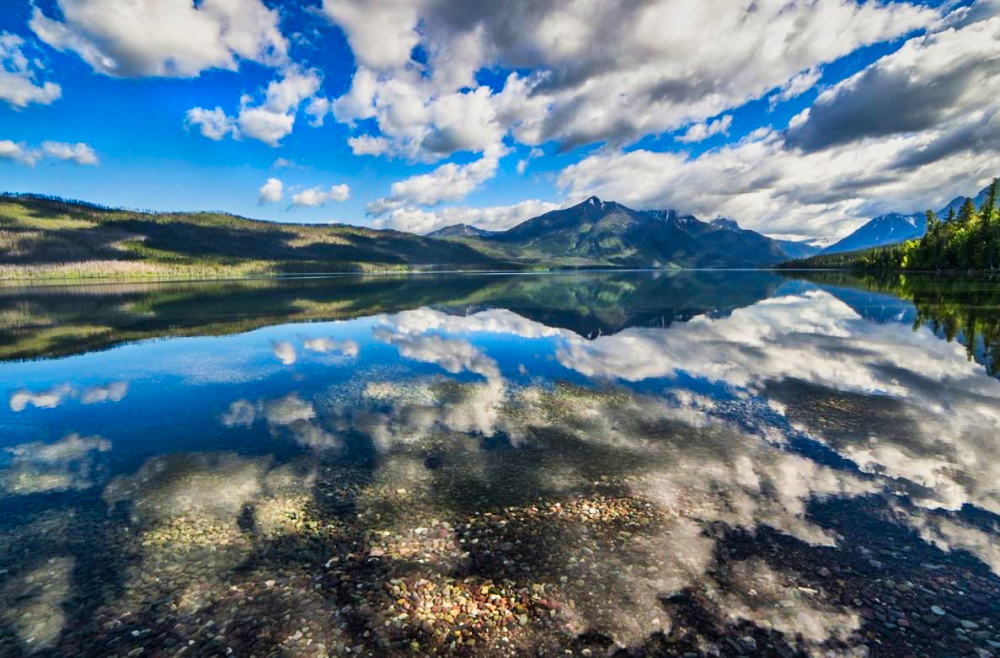
The Going-to-the-Sun Road parallels the lake along its southern shoreline of Lake McDonald
Bird Woman Falls – Just past the West Tunnel and beyond the switchback, you can stop to view Bird Woman Falls. Bird Woman falls from a height of 560 feet, the tallest in the park. The water flows into a “hanging canyon or valley,” a U-shaped valley carved by glaciers over 10,000 years ago.
Haystack Falls – I love this view. Not only do you get to drive by a 490-foot waterfall, there’s a pullout that provides a stunning view of the valley facing westward.
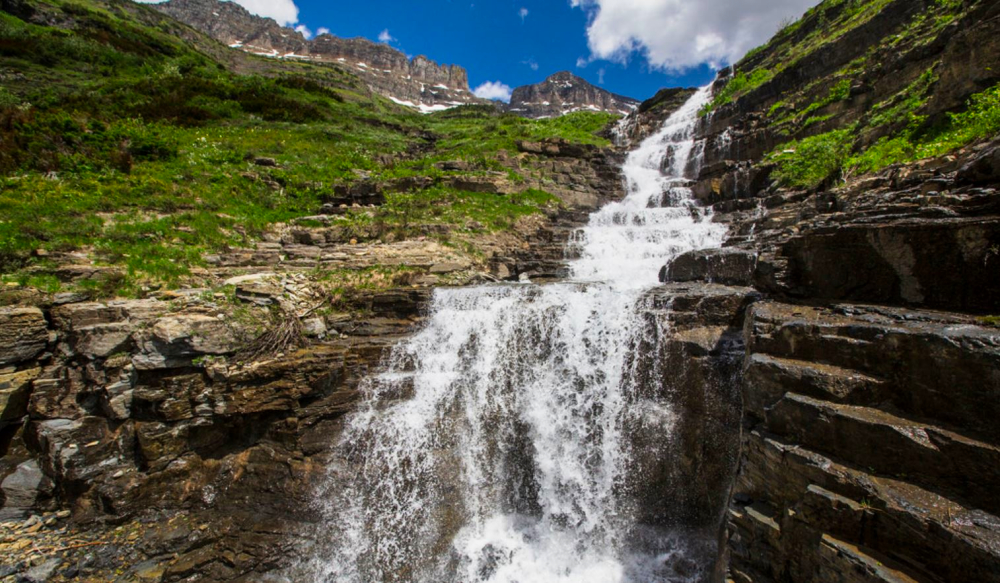
This beautiful waterfall cascades down the western side of the Garden Wall, and spills under a stone bridge.
Weeping Wall – You can’t really stop at this location, but you can’t miss it because you’ll have to drive right through the water. Water seeps out from the side of the rock and onto the road. Someone told me that spring provides a particularly pretty show when the snowmelt feeds the Garden Wall. As a passenger driving back west, I found it fun to open the window and let the water cool me off.
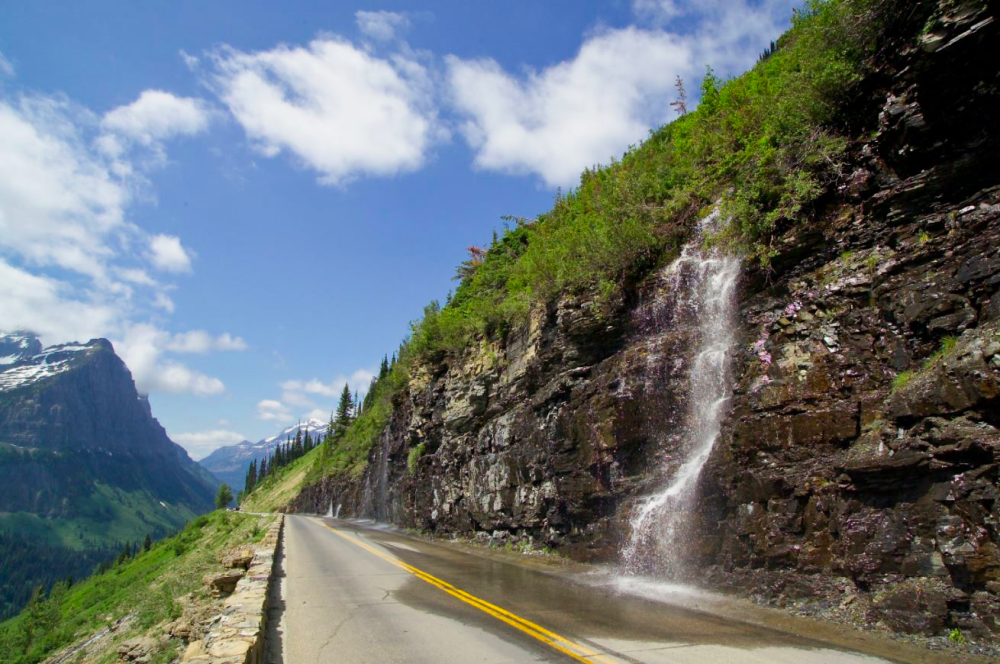
Weeping Wall is a natural waterfall that seeps out from the side of the Garden Wall, and is fed by runoff from snowmelt
Big Bend – Another one of my favorite spots in the park. Just beyond the Weeping Wall, we parked our truck for a magnificent view. Mount Oberlin, Cannon Mountain, Clements Mountain and Heavens Peak surround this picturesque valley.
Triple Arches – During high season, it’s hard to stop and view this engineering marvel. This iconic structure Triple Arches remains strong at nearly 90 years old.
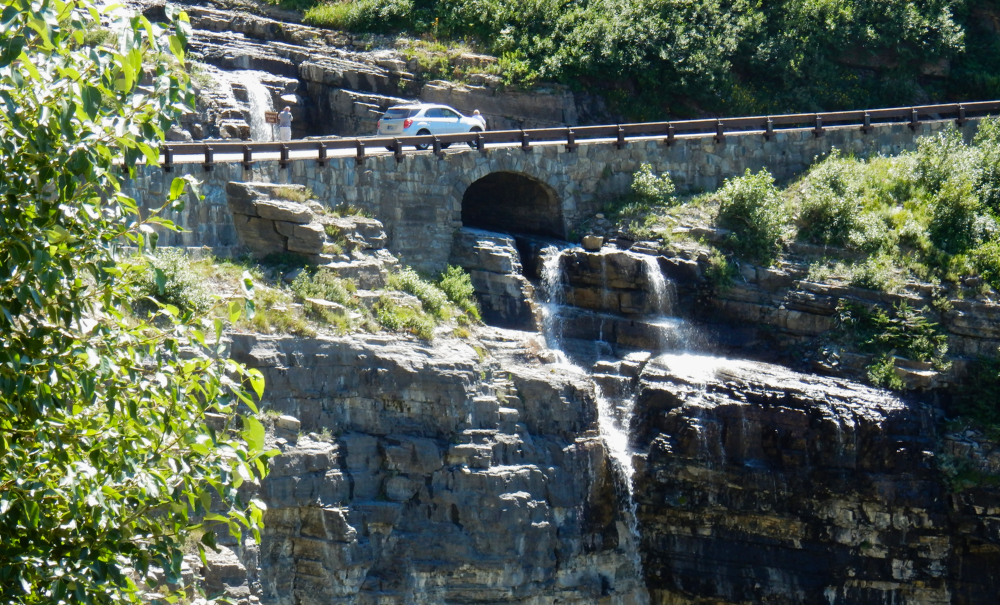
Bridge Work on Going To The Sun Road
Logan Pass – The most popular spot in the park resides at the highest point on Going-To-The-Sun road and directly on the continental divide. With stunning views, access to famous hiking trails who can hardly blame them. Really Logan Pass deserves its own blog post.
Lunch Creek – About 1 mile beyond Logan Pass, another creek crosses under Going-To-The-Sun Road. Bubbling water slips over a natural stone staircase and colorful wildflowers litter the landscape. A ranger also told us to watch out for bighorn sheep when visiting, who like to frequent the creek.
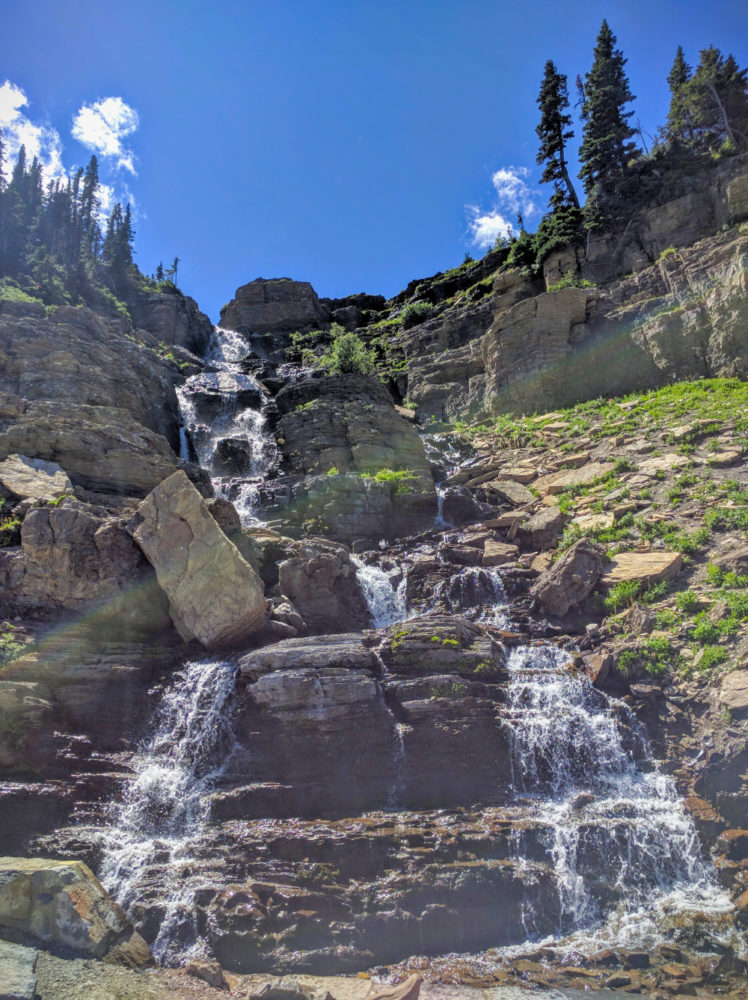
Lunch Creek
Jackson Glacier Overlook – Each year the glacier gets smaller, and according to the park rangers, at its current rate, it will be gone by 2030 along with all the other glaciers in the park. That’s 14 years from now, so get your glacier viewing in soon.
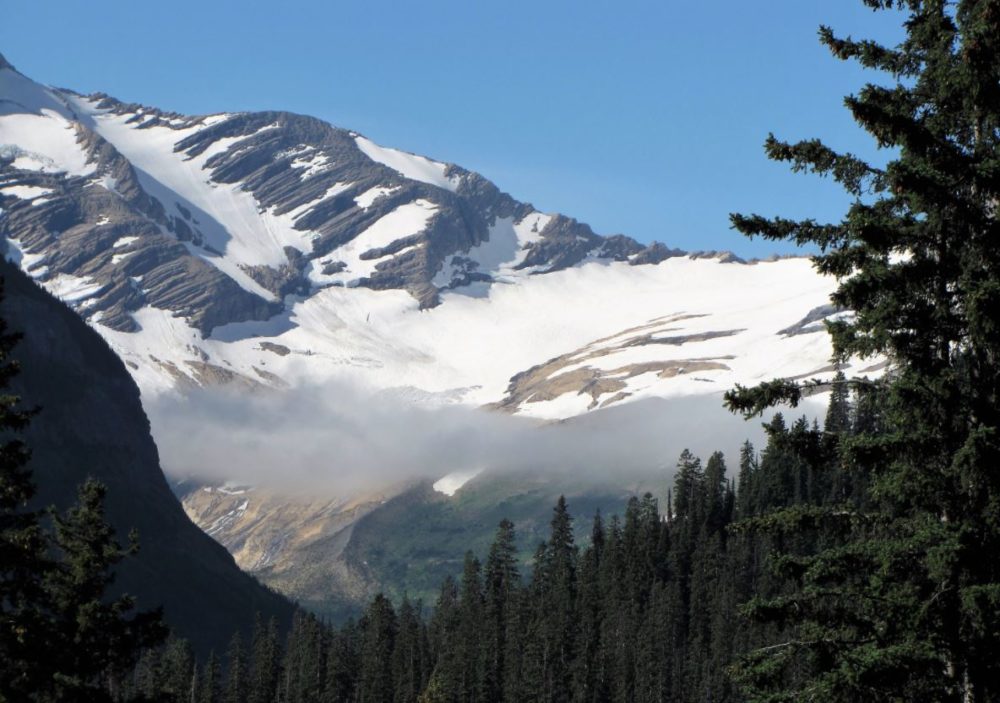
Jackson Glacier will be gone by 2030.
St. Mary Falls to Virginal Falls – This is another unmarked pullout along Going-To-The-Sun Road, but if there’s enough parking its worth the 4-mile in-and-out round trip hike. This takes you on a tour of a set of 5 distinct waterfalls. Frothy white water falls into opal blue pools. Just astounding!
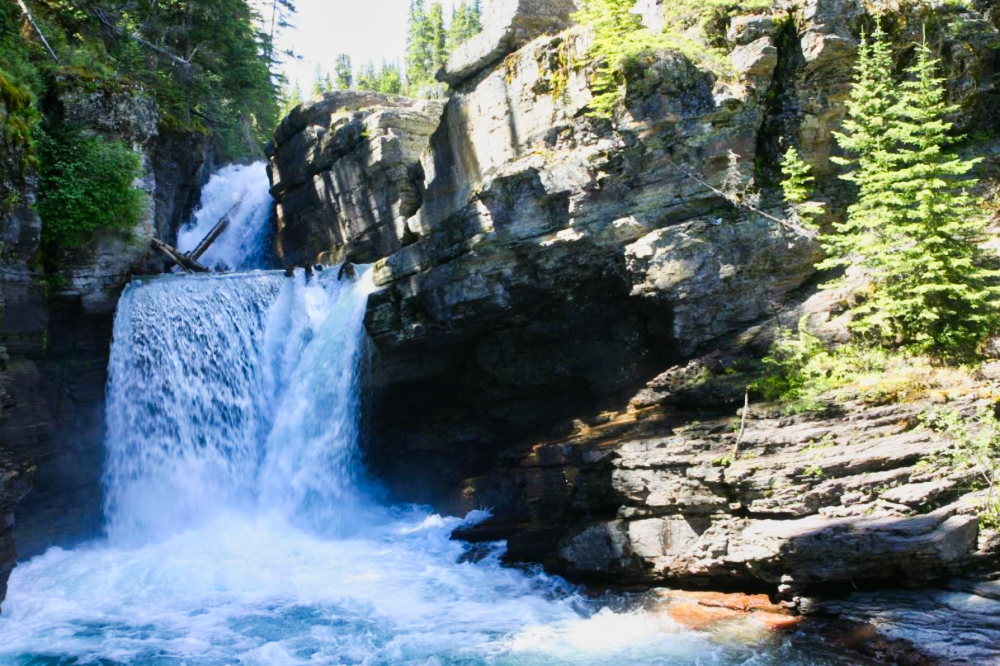
St Mary’s Falls
Sun Point – If you made it this far, then you have to stop here. You won’t regret the spectacular view of Little Chieftain, Dusty Star Mountain, and Going-To-The-Sun mountain set as a backdrop to St. Mary Lake.
Wild Goose Island – This stop is the most photographed places in the world. At dawn its crowded with photographers, at midday it’s filled with tourists, but it’s worth it.
Saint Mary Visitor Center – At the east entrance of the park, sits the newly refurbished visitor center. There’s a huge relief map of the park’s peaks and valleys. The exhibits here also explain the park from the perspective of its original inhabitants—the Blackfeet, Salish, Kootenai, and Pend d’Orielle tribes.
